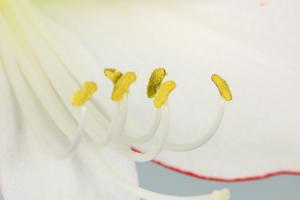Plant Cell Anatomy: Where is the DNA?
Plant cells, like all eukaryotic cells, contain a nucleus that houses the cell's genetic material. This genetic material, also known as DNA (deoxyribonucleic acid), contains the instructions that determine the characteristics of the plant. However, DNA is not just found in the nucleus of a plant cell. Let's take a closer look at where DNA is located within a plant cell.
The Nucleus
The nucleus is the most well-known organelle within a plant cell. It is responsible for storing and protecting the DNA within the cell. The nucleus in a plant cell is typically located in the center of the cell and is separated from the rest of the cell by a double membrane called the nuclear envelope. The nuclear envelope has small openings called nuclear pores that allow molecules, such as RNA (ribonucleic acid) and proteins, to enter and exit the nucleus.
The Chloroplasts
Chloroplasts are organelles found only in plant cells. They are responsible for photosynthesis, the process by which plants convert light energy into chemical energy. Chloroplasts contain a small, circular piece of DNA called chloroplast DNA (cpDNA). Chloroplast DNA contains the genes necessary for encoding proteins involved in photosynthesis. Although chloroplast DNA is small and only contains a fraction of the plant cell's DNA, it plays a crucial role in the plant's survival.
The Mitochondria
Mitochondria are organelles found in all eukaryotic cells, including plant cells. They are responsible for producing energy in the form of ATP (adenosine triphosphate) through a process called cellular respiration. Like chloroplasts, mitochondria contain their own small, circular piece of DNA called mitochondrial DNA (mtDNA). Mitochondrial DNA is responsible for encoding proteins necessary for mitochondrial function. Although mitochondrial DNA is also small, it is important for the proper functioning of the cell.
Conclusion
In summary, DNA is located in several parts of a plant cell, including the nucleus, chloroplasts, and mitochondria. Each of these organelles contains a small amount of the plant cell's DNA and plays a specific role in the cell's function. Understanding the location and function of DNA within a plant cell is crucial for understanding how plants grow and develop.

 how many times do yo...
how many times do yo... how many planted tre...
how many planted tre... how many pine trees ...
how many pine trees ... how many pecan trees...
how many pecan trees... how many plants comp...
how many plants comp... how many plants can ...
how many plants can ... how many plants and ...
how many plants and ... how many pepper plan...
how many pepper plan...































